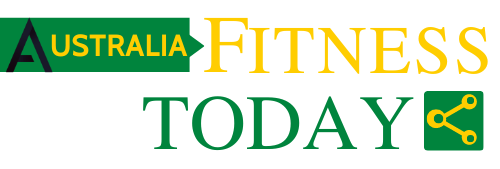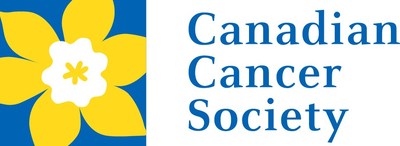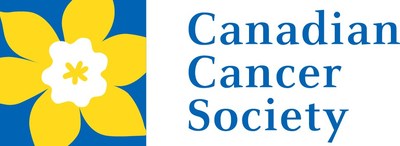New international report also shows almost 120 countries and territories now require graphic picture warnings on cigarette packages
TORONTO, Oct. 1, 2018 /PRNewswire/ — An international report released today by the Canadian Cancer Society (CCS) shows there is tremendous momentum worldwide for tobacco plain packaging. There are now 25 countries and territories moving forward with plain packaging, with 9 having adopted the measure and 16 working on it.
The number of countries requiring plain packaging is expected to accelerate further because of the World Trade Organization (WTO) decision on June 28, 2018 that Australia’s plain packaging requirements are consistent with WTO’s international trade agreements.
The CCS report, Cigarette Package Health Warnings: International Status Report, documents global progress on plain packaging, ranks 206 countries and territories on the size of their health warnings on cigarette packages and lists countries and territories that require graphic picture warnings.
The report found that 118 countries and territories now require picture health warnings on cigarette packages, an increase from 100 in 2016. This represents 58% of the world’s population. Canada was the first country to require picture health warnings in 2001.
“There is an unstoppable worldwide trend for countries to use graphic pictures on cigarette packages to show the deadly health effects of smoking and to require plain packaging,” says Rob Cunningham, senior policy analyst, Canadian Cancer Society. “Australia was the first country to implement plain packaging in 2012 and now the dominoes are falling.”
Guidelines under the international tobacco treaty, the WHO Framework Convention on Tobacco Control (FCTC), recommend that countries consider implementing plain packaging. Plain packaging includes health warnings on packages and prohibits tobacco company branding such as colours, logos and design elements. It also requires the brand name to be a standard font size, style and location on the package and the brand portion of each package to be the same colour such as an unattractive brown. Finally, the package format is standardized. Plain packaging regulations put an end to packaging being used for product promotion, increases the effectiveness of package warnings, curbs package deception and decreases tobacco use.
Plain packaging has been implemented in Australia (2012), France (2016), the United Kingdom (2016), Norway (2017), Ireland (2017), New Zealand (2018) and Hungary (2018). It will be implemented in Uruguay (2019) and Slovenia (2020) and is in process or under consideration in Canada, Belgium, Thailand, Georgia, Singapore, Nepal, Sri Lanka, South Africa, Romania, Jersey, Guernsey, Taiwan, Chile, Finland, Turkey and Saudi Arabia.
Cigarette package warnings are a highly cost-effective way to increase awareness of the negative health effects of smoking and to reduce tobacco use. Picture-based warnings convey a more powerful message than a text-only warning and the effectiveness of warnings is known to increase with size.
Guidelines under the FCTC recommend that warnings should:
- be as large as is achievable;
- include a rotated series of graphic pictures;
- be at the top of both the front and back of packages.
Picture warnings are especially valuable for low- and middle-income countries where there are higher rates of illiteracy and where governments may have few resources. Health departments determine the content of warnings and the tobacco industry is responsible for printing the warnings on packages. Examples of graphic picture warnings include a diseased lung or mouth, a patient with lung cancer in a hospital bed and a child being exposed to second-hand smoke.
“It is extremely positive for global public health that almost 120 countries and territories have implemented picture health warnings and that so many are moving toward plain packaging,” says Cunningham. “The international momentum poses a threat to tobacco industry sales worldwide and will save lives lost to cancer and other tobacco-related diseases.”
In total 107 countries and territories have required warnings to cover at least 50% of the package front and back (on average), up from 94 in 2016 and 24 in 2008. There are now 55 countries and territories with a size of at least 65% (on average) of the package front and back. The top countries ranked by warning size as an average of the front and back of the package are:
1. 92.5% East Timor (Timor-Leste) (85% of front, 100% of back)
2. 90% Nepal (90%, 90%)
2. 90% Vanuatu (90%, 90%)
4. 87.5% New Zealand (75%, 100%)
5. 85% Hong Kong (S.A.R., China) (85%, 85%)
5. 85% India (85%, 85%)
5. 85% Thailand (85%, 85%)
8. 82.5% Australia (75%, 90%)
9. 80% Sri Lanka (80%, 80%)
9. 80% Uruguay (80%, 80%)
In the 2016 report, Nepal and Vanuatu were top ranked at 90%.
The report was released today in Geneva, Switzerland, at the 8th session of the Conference of the Parties to the WHO Framework Convention on Tobacco Control (FCTC) being held October 1-6. The report supports the implementation of the FCTC. The FCTC has an obligation for parties to require health warnings that “should be 50% or more of the principal display areas but shall be no less than 30% of the display areas” and may be in the form of, or include, picture warnings. There are now 181 countries that are parties to the FCTC.
This is the 6th Canadian Cancer Society international report on cigarette package health warnings. Previous reports were published in 2008, 2010, 2012, 2014 and 2016.
Cigarette Package Health Warnings report in English
Cigarette Package Health Warnings report in French
About the Canadian Cancer Society
The Canadian Cancer Society is a national community-based organization whose mission is the eradication of cancer and the enhancement of the quality of life of people living with cancer. When you want to know more about cancer, visit our website www.cancer.ca or call our toll-free, bilingual Cancer Information Service at 1 888 939-3333.
For further information: Rob Cunningham, Senior Policy Analyst, Canadian Cancer Society, Phone: +1-613-762-4624, Email: rcunning@cancer.ca; Rosie Hales, Communications Specialist, Canadian Cancer Society, Phone: +1-416-934-5338, Email: rosie.hales@cancer.ca




